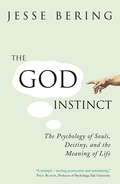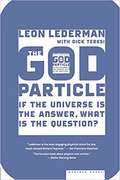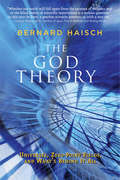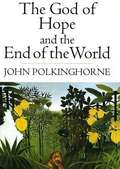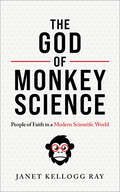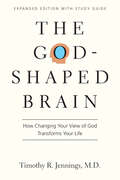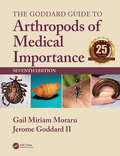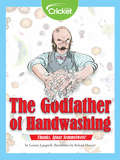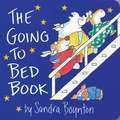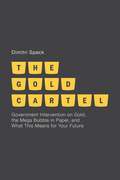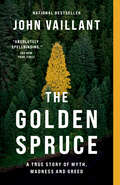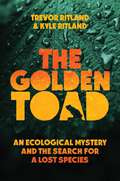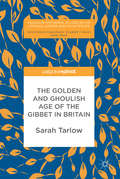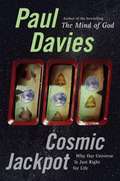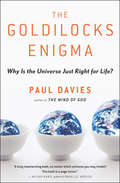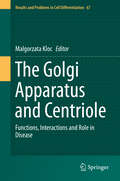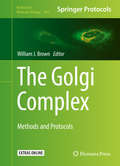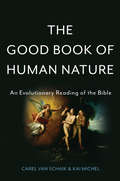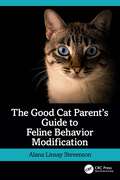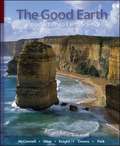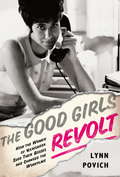- Table View
- List View
The God Instinct: The Psychology of Souls, Destiny and the Meaning of Life
by Jesse BeringThe God Instinct explores how people's everyday thoughts, behaviours and emotions betray an innate tendency to reason as though God were deeply invested in their public lives and secret affairs.In this entertaining and thought-provoking book, Jesse Bering unravels the evolutionary mystery of why we grapple for meaning, purpose and destiny in life. He argues that God is not merely an idea to be entertained or discarded based on the evidence. Nor is God a cultural invention, an existential band-aid, an opiate of the masses. Instead, Bering proposes, God is a way of thinking - one that evolved through our ancestors, millions of years ago, to keep us in check and give us the edge on our competitors.While a belief in higher forces may seem ridiculous to some, The God Instinct shows that it is hardwired into our genetic make-up, and carries with it massive evolutionary benefits.
The God Part of the Brain: A Scientific Interpretation of Human Spirituality and God
by Matthew AlperAre human beings hard-wired to believe in God? If so, what would the consequences be and how would such hard-wiring impact mankind's belief in eternal life, morality, and a sovereign God?
The God Particle: If the Universe Is the Answer, What Is the Question?
by Leon Lederman with Dick TeresiDid you know that the most creative companies have centralized bathrooms? That brainstorming meetings are a terrible idea? That the color blue can help you double your creative output? From the New York Times best-selling author of How We Decide comes a sparkling and revelatory look at the new science of creativity. Shattering the myth of muses, higher powers, even creative "types," Jonah Lehrer demonstrates that creativity is not a single gift possessed by the lucky few. It's a variety of distinct thought processes that we can all learn to use more effectively. Lehrer reveals the importance of embracing the rut, thinking like a child, daydreaming productively, and adopting an outsider's perspective (travel helps). He unveils the optimal mix of old and new partners in any creative collaboration, and explains why criticism is essential to the process. Then he zooms out to show how we can make our neighborhoods more vibrant, our companies more productive, and our schools more effective.You'll learn about Bob Dylan's writing habits and the drug addictions of poets. You'll meet a Manhattan bartender who thinks like a chemist, and an autistic surfer who invented an entirely new surfing move. You'll see why Elizabethan England experienced a creative explosion, and how Pixar's office space is designed to spark the next big leap in animation. Collapsing the layers separating the neuron from the finished symphony, Imagine reveals the deep inventiveness of the human mind, and its essential role in our increasingly complex world.
The God Species
by Mark LynasWe humans are the God species, both the creators and destroyers of life on this planet. As we enter a new geological era - the Anthropocene - our collective power now overwhelms and dominates the major forces of nature. But from the water cycle to the circulation of nitrogen and carbon through the entire Earth system, we are coming dangerously close to destroying the planetary life-support systems that sustain us. In this controversial new book, Royal Society Science Books Prize winner Mark Lynas shows us how we must use our new mastery over nature to save the planet from ourselves. Taking forward the work of a brilliant new group of Earth-system scientists who have mapped out our real 'planetary boundaries', Lynas draws up a radical manifesto calling for the increased use of environmentally-friendly technologies like genetic engi- neering and nuclear power as part of a global effort to use humanity's best tools to protect and nurture the biosphere. Ecological limits are real, but economic limits are not, Lynas contends. We can and must feed a richer population of nine billion people in decades to come, whilst also respecting the nine planetary boundaries - from biodiversity to ocean acidification - now identified and quantified by scientists. Ripping up years of environmental orthodoxy, he reveals how the prescriptions of the current green movement are likely to hin- der as much as help our vitally-needed effort to use science and technology to play God and save the planet. From the Hardcover edition.
The God Theory: Universes, Zero-Point Fields and What's Behind it All
by Bernard HaischThe author, an astrophysicist, rejects dogmatic materialism and argues for the theory that an infinite consciousness is the underlying reality.
The God Theory: Universes, Zero-Point Fields, and What's Behind It All
by Bernard HaischOn the one hand, we have traditional science, based on the premises of materialism, reductionism, and randomness, with a belief that reality consists solely of matter and energy, that everything can be measured in the laboratory or observed by a telescope. If it can't, it doesn't exist. On the other hand, we have traditional religious dogma concerning God that fails to take into account evolution, a 4.6 billion-year-old Earth, and the conflicting claims of the world's religions. In The God Theory, Bernard Haisch discards both these worldviews and proposes a theory that provides purpose for our lives while at the same time is completely consistent with everything we have discovered about the universe and life on Earth. To wit, Newton was right -- there is a God -- and wrong -- this is not merely a material world. Haisch proposes that science will explain God and God will explain science. Consciousness is not a mere epiphenomenon of the brain; it is our connection to God, the source of all consciousness. Ultimately it is consciousness that creates matter and not vice versa. New discoveries in physics point to a background sea of quantum light underlying the universe. The God Theory offers a worldview that incorporates cutting-edge science and ancient mystical knowledge. This is nothing less than a revolution in our understanding.
The God of Hope and the End of the World
by John PolkinghorneIn this engaging book, a leading scientist-theologian draws on ideas from science, scripture, and theology to address the question of hope and disillusionment found in the bible and other sources.
The God of Monkey Science: People of Faith in a Modern Scientific World
by Janet Kellogg RayHow to hold true to your faith and embrace modern scienceEver since the Scopes Monkey Trial in the early twentieth century, American evangelicals have considered scientists public enemy #1. But this antipathy to modern science turned deadly during the COVID-19 crisis, when white evangelicals snubbed precautions and vaccines. Herself an evangelical Christian and a science educator, Janet Kellogg Ray explains how we got here and how to fix it.As the follow-up to Baby Dinosaurs on the Ark?, this lively volume covers evolution as well as the coronavirus pandemic, vaccines, climate change, and the frontiers of genetic research. Ray explains the facts accessibly and with verve. Along the way, she vividly narrates the scientific achievements—and political and religious drama—that got us to where we are today.Ultimately, Ray calls for evangelicals to speak to science, rather than deny it. We need Christian ethics now more than ever to determine how best to act in light of current scientific data and for love of neighbor. If you&’re afraid of science hurting your faith, this book will show you how to be true to both.
The God-Shaped Brain: How Changing Your View of God Transforms Your Life
by Timothy R. JenningsWhat you believe about God actually changes your brain. Brain research in neuroscience has found that our thoughts and beliefs affect our physical, mental, and spiritual health. Mind and body are interrelated, and we are designed for healthy relationships of love and trust. When we understand God as good and loving, we flourish. Unfortunately, many of us have distorted images of God and mostly think of him in fearful, punitive ways. This leads us into unhealthy patterns of self-defeating behaviors and toxic relationships. But our lives can change when God renews our minds with a truer picture of him. Psychiatrist Tim Jennings unveils how our brains and bodies thrive when we have a healthy understanding of who God is. He dispels common misconceptions about God and shows how different God concepts affect the brain differently. Our brains can adapt, change, and rewire with redeemed thinking that frees us from unnecessary pain and suffering. Discover how neuroscience and Scripture come together to bring healing and transformation to our lives. This expanded edition now includes a study guide for individual reflection or group discussion, with questions for learning from Scripture, science and nature, and experience.
The Goddard Guide to Arthropods of Medical Importance
by Gail Miriam Moraru Jerome Goddard IICovering all major arthropods of medical importance worldwide, this award-winning resource has established itself as a standard reference for almost 25 years. With the globilization of commerce and the world becoming more intimately connected through the everyday ease of travel, unknown arthropod species are being increasingly encountered. This means access to up-to-date, authoritative information in medical entomology has never been more important. Now in its seventh edition, this book maintains its well-acclaimed status as the ultimate easy-to-use guide to identify disease-carrying arthropods, the common signs and symptoms of vector-borne diseases, and the current recommended procedures for treatment. Includes an in-depth chapter with diagnostic aids to help physicians to recognize and accurately diagnose arthropod-related diseases and conditions more easilyUpdates all chapters with the latest medical and scientific findings, including Zika virus, red meat allergy, new viruses found in ticks, and vaccine development for malaria and dengue feverPresents a greater medical parasitology emphasis throughout Offers electronic downloads containing additional photographs of arthropod-caused diseases and lesions, as well as instructional videos with pest identification aids, basic entomology, and insect and pest ecology.Illustrated throughout with detailed color images to aid identification, The Goddard Guide to Arthropods of Medical Importance, Seventh Edition will remain an essential guide for physicians, public health officials, and pest control professionals.
The Godfather of Handwashing: Thanks, Ignaz Semmelweis!
by Leanne LongwillFind out how Ignaz Semmelweis was the first doctor to make the connection between hand washing and infection.
The Going to Bed Book
by Sandra BoyntonSerious silliness for all ages. Artist Sandra Boynton is back and better than ever with completely redrawn versions of her multi-million selling board books. These whimsical and hilarious books, featuring nontraditional texts and her famous animal characters, are sure to educate and entertain children of all ages.
The Gold Cartel
by Dimitri SpeckIn times of financial crises and imminent sovereign defaults, gold is the investment on everyone's lips. As a safe investment, one could traditionally rely on gold markets for good, stable performance, however in recent years, they have seen surprising volatility and price fluctuation, with no visible reason as to why. In The Gold Cartel, seasoned commodity analyst Dimitri Speck illustrates in detail how central banks have secretly manipulated the price of gold in an effort to calm financial markets and control inflation. Using quantitative analysis of historic gold market patterns, the author shows how and when central banks intervene in gold markets, and how this has affected price movement and impacted the global financial markets, leading to the creation of a mega-bubble. Since the abolition of the gold standard in 1971, the indebtedness of the global economy has increased rapidly and has now reached levels way beyond comprehension. What are the mechanisms that have led us to this mega-bubble? Is it possible to avoid a catastrophic outcome like deflation or hyperinflation? And how does this relate to the gold markets? This book has the answers.
The Golden Spruce: A True Story of Myth, Madness and Greed
by John VaillantNATIONAL BESTSELLER • WINNER OF THE GOVERNOR GENERAL'S LITERARY AWARD FOR NON-FICTION • WINNER OF THE WRITERS&’ TRUST NON-FICTION PRIZE&“Absolutely spellbinding.&” —The New York TimesThe environmental true-crime story of a glorious natural wonder, the man who destroyed it, and the fascinating, troubling context in which this act took place. FEATURING A NEW AFTERWORD BY THE AUTHOROn a winter night in 1997, a British Columbia timber scout named Grant Hadwin committed an act of shocking violence in the mythic Queen Charlotte Islands. His victim was legendary: a unique 300-year-old Sitka spruce tree, fifty metres tall and covered with luminous golden needles. In a bizarre environmental protest, Hadwin attacked the tree with a chainsaw. Two days later, it fell, horrifying an entire community. Not only was the golden spruce a scientific marvel and a tourist attraction, it was sacred to the Haida people and beloved by local loggers. Shortly after confessing to the crime, Hadwin disappeared under suspicious circumstances and is missing to this day. As John Vaillant deftly braids together the strands of this thrilling mystery, he brings to life the ancient beauty of the coastal wilderness, the historical collision of Europeans and the Haida, and the harrowing world of logging—the most dangerous land-based job in North America.
The Golden Toad: An Ecological Mystery and the Search for a Lost Species
by Trevor Ritland Kyle RitlandThe Costa Rican cloud forest, a mysterious amphibian killer, and a vanished species: with support from Leonardo DiCaprio&’s Re:wild campaign, twin documentarians and environmental writers follow their father&’s footsteps into the heart of the modern extinction crisis. As young boys, Trevor and Kyle Ritland were fascinated by the magnificent golden toad of Costa Rica, a brilliant species their biologist father showed them in his projector&’s slide shows. Native to only one wind-battered ridgeline high on the continental divide above the cloud forests of Monteverde, thousands of golden toads would congregate for a few weeks each year in ephemeral pools among the twisted roots to mate, deposit their offspring, and retreat again beneath the earth. But from one year to the next, the toads disappeared without a trace; the last of them vanished more than thirty years ago. Since then, only rumors remain—alleged sightings by local residents, which beg the question: could the golden toad still be alive? In The Golden Toad, Trevor and Kyle set off to investigate an environmental mystery with unexpected revelations, a story that speaks to our own collective and uncertain future. Guided by Costa Rican naturalists—including the last person to have seen the golden toad alive—Trevor searches for survivors while Kyle hunts the killer, and their paths lead them through an imperiled forest, a deadly pandemic, and a changing climate, finally intertwining at the site of the golden toad&’s last emergence deep in Monteverde&’s Bosque Eterno de Los Niños. The toad&’s demise becomes a haunting foretelling of approaching ecological crisis, but with a gold lining on the horizon. The Golden Toad changes the conversation around extinction, climate change, and conservation while exploring environmental grief, resurrection, and hope in a changing world.
The Golden and Ghoulish Age of the Gibbet in Britain (Palgrave Historical Studies in the Criminal Corpse and its Afterlife)
by Sarah TarlowThis book is open access under a CC BY 4.0 licence. This book is the first academic study of the post-mortem practice of gibbeting (‘hanging in chains’), since the nineteenth century. Gibbeting involved placing the executed body of a malefactor in an iron cage and suspending it from a tall post. A body might remain in the gibbet for many decades, while it gradually fell to pieces. Hanging in chains was a very different sort of post-mortem punishment from anatomical dissection, although the two were equal alternatives in the eyes of the law. Where dissection obliterated and de-individualised the body, hanging in chains made it monumental and rooted it in the landscape, adding to personal notoriety. Focusing particularly on the period 1752-1832, this book provides a summary of the historical evidence, the factual history of gibbetting which explores the locations of gibbets, the material technologies involved in hanging in chains, and the actual process from erection to eventual collapse. It also considers the meanings, effects and legacy of this gruesome practice.
The Goldilocks Enigma: Why Is the Universe Just Right for Life?
by Paul DaviesPeople have long gazed in wonder at the universe and asked, Why are we here? Until recently, the answer has been the province of priests and philosophers, but now scientists are starting to weigh in with ideas that are both surprising and deeply controversial. In his new book, physicist Paul Davies shows how recent scientific discoveries point to a perplexing fact: many basic features of the physical universe-- from the speed of light to the most humble carbon atom-- seem tailor-made to produce life. A radical new theory says it's because our universe is just one of an infinite number of universes, each one slightly different. Our universe is bio-friendly by accident; we just happened to win the cosmic jackpot. While this multiverse theory is compelling, it has bizarre implications, from infinite copies of each of us to Matrix-like simulated universes. Davies believes there's a more satisfying solution to the question of existence: the observations we make today could help shape the nature of reality in the remote past. If this is true, then life and, ultimately, consciousness aren't just incidental byproducts of nature, but central players in the formation of the universe.
The Goldilocks Enigma: Why Is the Universe Just Right for Life?
by Paul DaviesThe Goldilocks Enigma is Paul Davies’s eagerly awaited return to cosmology, the successor to his critically acclaimed bestseller The Mind of God. Here he tackles all the "big questions," including the biggest of them all: Why does the universe seem so well adapted for life? In his characteristically clear and elegant style, Davies shows how recent scientific discoveries point to a perplexing fact: many different aspects of the cosmos, from the properties of the humble carbon atom to the speed of light, seem tailor-made to produce life. A radical new theory says it’s because our universe is just one of an infinite number of universes, each one slightly different. Our universe is bio-friendly by accident -- we just happened to win the cosmic jackpot. While this "multiverse" theory is compelling, it has bizarre implications, such as the existence of infinite copies of each of us and Matrix-like simulated universes. And it still leaves a lot unexplained. Davies believes there’s a more satisfying solution to the problem of existence: the observations we make today could help shape the nature of reality in the remote past. If this is true, then life -- and, ultimately, consciousness -- aren’t just incidental byproducts of nature, but central players in the evolution of the universe. Whether he’s elucidating dark matter or dark energy, M-theory or the multiverse, Davies brings the leading edge of science into sharp focus, provoking us to think about the cosmos and our place within it in new and thrilling ways.
The Golem: What Everyone Should Know About Science
by Harry Collins Trevor PinchScience, it would seem, is neither all good nor all bad. It gives us nuclear accidents and cures for disease, agricultural self-sufficiency and death in space flight. Harry Collins and Trevor Pinch liken science to the Golem, a creature from Jewish mythology, powerful yet potentially dangerous, a gentle, helpful creature that may yet run amok at any moment. Through a series of intriguing case studies of famous and not-so-famous scientific episodes, ranging from relativity and cold fusion to memory in worms and the sex lives of lizards, the authors debunk the idea that science is the straightforward result of competent theorisation, observation and experimentation. Closer to the truth, they suggest, is the realisation that scientific certainty comes from interpreting ambiguous results within an order imposed by scientists themselves. This thought-provoking account will give general readers a new perspective on the place of science in society. '. . . perverse but entertaining . . . the writing is deft, the stories are good and there is not a boring page. ' Nature '. . . a must for every science student. ' Science Reporter
The Golgi Apparatus and Centriole: Functions, Interactions and Role in Disease (Results and Problems in Cell Differentiation #67)
by Malgorzata KlocThis volume takes a closer look how the cell organelles Golgi apparatus (also known as the Golgi complex or Golgi body), and centriole are structurally and functionally intertwined.Initially, it was believed that the role of Golgi complex is limited to the packaging and preparation for secretion of various cellular proteins, while the centriole participates in cell division and cilia formation. However, since their discovery nearly 200 years ago, it became clear that these two organelles are interacting, and that their functions are much more complex and far reaching than previously thought. Recent findings indicate that the Golgi–Centriole relationship may be important for directional protein transport, cell polarization and cell cycle progression. Current studies indicate that Golgi and centriole also participate in development and act as cellular and immunological sensors, and that their abnormalities lead to cell and developmental abnormalities, Alzheimer, cancer, various lipid disorders and neurological and immunological diseases in humans. This volume combines the latest information on the structure, molecular composition, and roles of Golgi and centriole in various cellular functions and diseases. The better understanding of the Golgi–centriole interactions may lead to the development of novel therapies for the treatment of various diseases, including cancer.
The Golgi Complex
by William J. BrownFocusing on new methods and techniques developed to address longstanding questions about the Golgi complex, this volume explores a diverse set of chapters, ranging from live and fixed cell imaging techniques to in vitro biochemical reconstitution systems. Each chapter provides a detailed set of specific instructions, which should enable anyone to successfully complete the assays. Written for the highly successful Methods in Molecular Biology series program, chapters include brief introductions to their respective topics, lists of the necessary materials and reagents, step-by-step, readily reproducible laboratory protocols, and tips from the experts on troubleshooting and avoiding known pitfalls. Practical and detailed, The Golgi Complex: Methods and Protocols will aid both new and established researchers in the field by providing strong hands-on instructions that can be directly applied to their research programs.
The Good Book of Human Nature: An Evolutionary Reading of the Bible
by Carel Van Schaik Kai MichelHow reading the Bible as a work of cultural and scientific evolution can reveal new truths about how our species conquered the Earth
The Good Cat Parent’s Guide to Feline Behavior Modification
by Alana Linsay StevensonCats are cuddly and adorable, but they are often misunderstood. Sadly, many cats are relinquished to shelters or rehomed due to normal behaviors that are incorrectly treated or mishandled. In this book, Elite Fear-Free and Low-Stress Handling Certified author Alana Linsay Stevenson empowers cat parents and teaches them how to address and modify challenging feline behavior.You will begin by learning basic kitten care and feline developmental stages; how cats differ behaviorally from group animals, such as dogs and people; feline body language; and how cats handle stress. Alana provides concise instruction on how to gently handle cats: how to pick up and carry them, acclimate them to carriers, the use of towels, alternatives to scruffing, and how our body language affects cats. Packed with photographs for visual reference, this book offers clear guidelines and easily implementable strategies for resolving feline behavioral problems, such as: failure to use the litter box play aggression petting aggression inter-cat aggression furniture scratching jumping on counters obsessing about food night wailing fear of people aggression to strangers The content is organized by topic for easy access to information, as you need it.The Good Cat Parent’s Guide to Feline Behavior Modification is for anyone who likes cats and wants to learn more about them. Whether you are a veterinary professional, a volunteer or shelter worker who regularly handles stressed cats, or a cat parent who simply wants to understand your cat, you will find helpful and useful information at your fingertips to give cats a better quality of life. No cat parent should be without this book!
The Good Earth
by David Mcconnell David Steer Catharine Knight Katharine Owens Lisa ParkThe Good Earth covers the primary topics included in other earth science texts. However, there are a few notable differences in its content compared to other textbooks. The Good Earth begins with an introduction (Chapter 1), then takes up the topic of astronomy (Chapters 2, 3), and moves on to solid earth (Chapters 4, 5, 6, 7, 8), and the processes (Chapters 9, 10, 11, 12), which overlap with the hydrosphere (Chapters 11, 12, 13), before dealing with the atmosphere (Chapters 14, 15, 16), and finishing with a wrap-up chapter on global change (Chapter 17) that incorporates elements of all the previous chapters. This text also includes interesting examples from recent events in relation to near-Earth asteroids, earthquakes, tsunamis, rockfalls, floods, and climate change.
The Good Girls Revolt: How the Women of Newsweek Sued their Bosses and Changed the Workplace
by Lynn PovichIt was the 1960s - - a time of economic boom and social strife. Young women poured into the workplace, but the 'Help Wanted' ads were segregated by gender and the 'Mad Men' office culture was rife with sexual stereotyping and discrimination. <P><P>Lynn Povich was one of the lucky ones, landing a job at Newsweek, renowned for its cutting-edge coverage of civil rights and the 'Swinging Sixties. ' Nora Ephron, Jane Bryant Quinn, Ellen Goodman, and Susan Brown miller all started there as well. It was a top-notch job - - for a girl - - at an exciting place. But it was a dead end. Women researchers sometimes became reporters, rarely writers, and never editors. Any aspiring female journalist was told, 'If you want to be a writer, go somewhere else. ' On March 16, 1970, the day Newsweek published a cover story on the fledgling feminist movement entitled 'Women in Revolt,' forty-six Newsweek women charged the magazine with discrimination in hiring and promotion. It was the first female class action lawsuit - - the first by women journalists - - and it inspired other women in the media to quickly follow suit. <P><P> Lynn Povich was one of the ringleaders. In The Good Girls Revolt, she evocatively tells the story of this dramatic turning point through the lives of several participants. With warmth, humor, and perspective, she shows how personal experiences and cultural shifts led a group of well-mannered, largely apolitical women, raised in the 1940s and 1950s, to challenge their bosses - - and what happened after they did. For many, filing the suit was a radicalizing act that empowered them to 'find themselves' and fight back. Others lost their way amid opportunities, pressures, discouragements, and hostilities they weren't prepared to navigate. <P><P> The Good Girls Revolt also explores why changes in the law didn't solve everything. Through the lives of young female journalists at Newsweek today, Lynn Povich shows what has - - and hasn't - - changed in the workplace.
